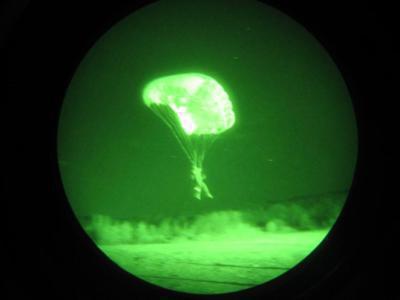-
Content
95 -
Joined
-
Last visited
Never -
Feedback
0%
Content Type
Profiles
Forums
Calendar
Dropzones
Gear
Articles
Fatalities
Stolen
Indoor
Help
Downloads
Gallery
Blogs
Store
Videos
Classifieds
Everything posted by inextremis
-
Could be that the mistake is that the larger canopy actually had dacron lines (like a hybrid), but is listed with microline. Blue skies
-
I think I made the first two stack in Missouri, or one of the first. April '78 at Moberly MO, C182 DZ run by Jay Weaver. I was in grad school at Mizzou at the time. Go Heartland CRW!
-
Don't know why someone didn't jump on this--check out the Sharpchuter 245 or the Startrac 1 265, great demo and demo crw canopies.
-
I was having some very snappy openings, occasionally a real dinger, on a Sharpchuter demo canopy that seemed to me a natural to flat pack--large canopy, F-111, etc. So I dug out a manual for Flight Concepts parachutes and it suggested a pro pack (I was also jumping a Stiletto and obviously pro packing that because of the shape). When I tried a pro pack on the Sharpchuter, it really tamed the openings and made them more consistent. And it's faster and takes up less space. Watch those brake lines--same comment about tandems applies when pro packing larger canopies.
-
Looks great, I have a similar set up but put the cam eye switch on the upper forward left side of the D box to eliminate another hole in my Optik but I think your set up is just as good, what's one more hole.
-
Here's what I do, for what it's worth. Cock the pilot chute. Take a bight (loop) of bridle towards the pin end, on the pilot chute side of the pin, and tie an overhand knot in it so 3 to 5 inches of loop protrudes from the knot. This effectively "locks" your pilot chute in the cocked position. Pack normally, put your pin in the closing loop and remove your pull up cord. Undo the knot, fold the bridle as usual and stow your pilot chute. There is no way you'll stuff this huge knot of bridle into a closed container or fold it into your pilot chute (and even if you did, your pilot chute is cocked), it keeps the pilot chute from somehow uncocking during packing, and it reminds you that you cocked it in the first place. There may be some mystery downside that I don't know about, but it's worked for me for years.
-
I think either Sabre would be better in your "novice out of burning plane" fantasy, because body position is much more critical for the proper opening of the elliptical Stiletto, and the Sabre is more forgiving of minor errors when flaring.
-
I use them on a large winged, but otherwise conventional suit, for camera work. I'm not a fan of having them outside gloves because of entanglement with pilot chute, (esp hackey or whatever else is on pilot chute apex), or with rivets and other junk on the aircraft. You can put them under gloves, but then there is the issue of reaching up to get your slider or a stuck soft toggle. A good compromise is to tie them in a loop and slip the loop over your velcro closure on your cuff. The cuff is very easy to peel open if you have "reach issues," but there is much less entanglement hazard. Shorten the loop so that the cords tension when your hands are at about 10:00 and 2:00, assuming your head is 12:00. Best if you can reach both your slider and toggles without screwing with the cords or cuff. And if you choose not to use the cords, make sure they're WAY down in your sleeve so they don't come out in midair. Blue skies.


